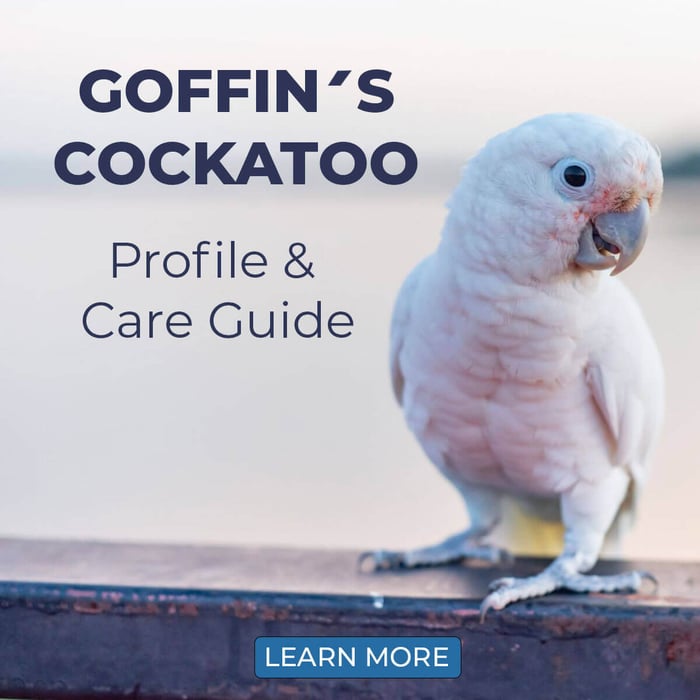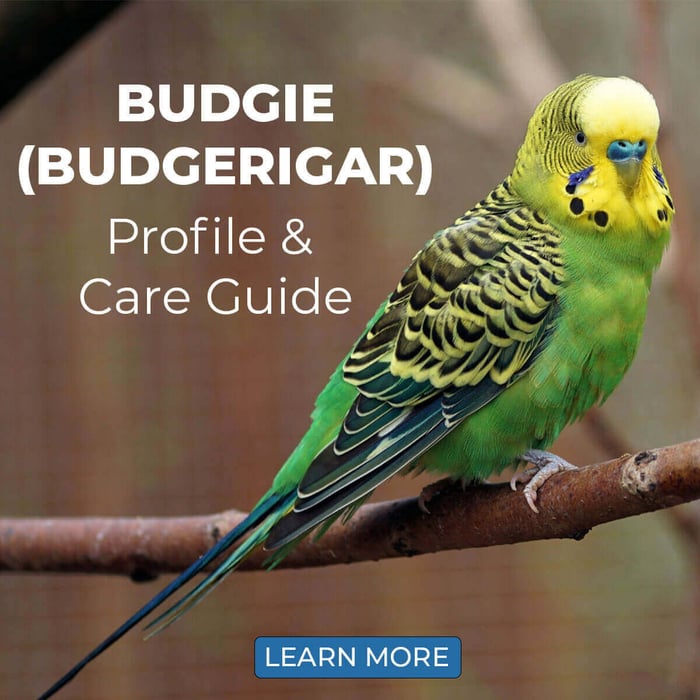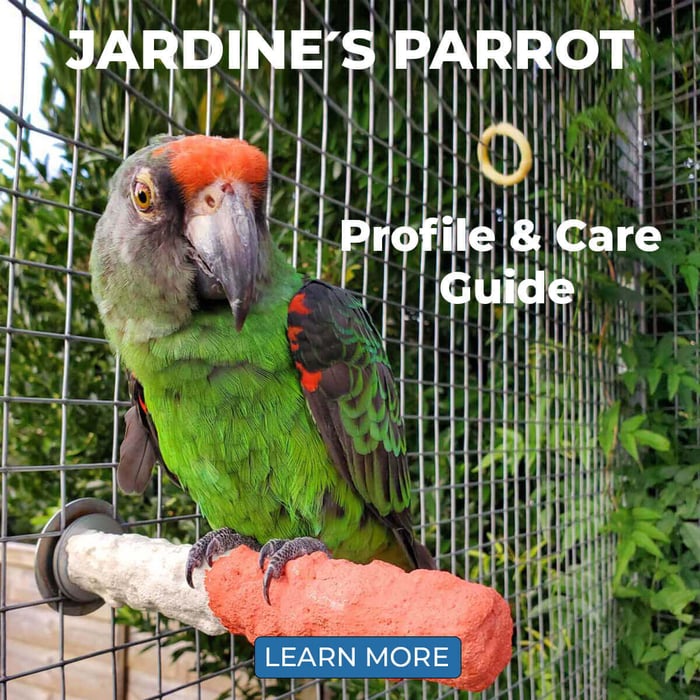Moluccan Cockatoo – Profile & Care Guide
| Common name: | Salmon-crested Cockatoo, Moluccan Cockatoo |
| Scientific name: | Cacatua moluccensis |
| Length: | 40 - 50 cm (15.6 - 19.5 inches) |
| Weight: | 775 - 935g (27.1 - 32.7 oz) |
| Lifespan: | 40-60 years |
| Origin: | Native to south Moluccus and eastern Indonesia |
| Noise Level: | Shrill screech with quavering notes, out-volume; any other bird, and are extremely loud. |
MOLUCCAN COCKATOO NATURAL HABITAT
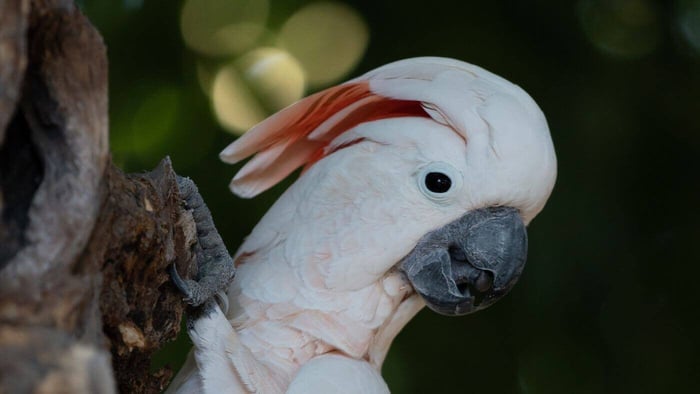
This species is native to the Moluccas archipelago in eastern Indonesia. Moluccan cockatoos inhabit lowland rainforests, mangrove swamps, and coastal forests. They naturally form big flocks, though they separate into pairs for breeding purposes.
Moluccan cockatoos breed once a year during the breeding season that lasts from March to September. Once they have chosen a partner, they stay with them for life and become deeply connected. In fact, these birds can even fall into depression when their mate dies.
Moluccan cockatoos are listed as Vulnerable by the IUCN Red List. The species' biggest threats are habitat loss and the pet trade.
INTELLIGENCE & PERSONALITY
Moluccan cockatoos have incredible emotional intelligence and are highly complex birds. These parrots are so intelligent that there have been many cases where they have figured out how to escape their cage. They are said to be equipped with a variety of technical skills that help them accomplish this.
Cockatoos can form a very strong emotional bond with their owner. In some cases, if not properly trained, they might even attack other family members due to their overprotectiveness towards the person they consider their mate. A change of hair or glasses might make your parrot extremely upset, which shows how emotionally demanding this bird really is.
These birds love physical affection, which makes them an attractive choice for many people.
However, it's not recommended to keep a Moluccan cockatoo in a family with kids, as an upset parrot might bite and cause severe damage with its strong beak.
If you want to avoid boredom as much as possible, you can go for two parrots, as they will entertain each other. However, it's important to keep in mind that these cockatoos will still be extremely demanding pets; they're often compared to small children that never grow up.
TALKING ABILITY
Moluccans will scream for no reason, even in the middle of the night. This screaming can become very problematic when the very demanding needs of this bird are not met, and it makes the species completely unsuitable for apartment living.
Due to their loudness, it takes a specific kind of household to live peacefully with a Moluccan.
These cockatoos are not known for their talking ability, although they are able to learn how to mimic a few words.
FEEDING & SUPPLEMENTS FOR YOUR MOLUCCAN COCKATOO
In the wild, salmon-crested cockatoos eat seeds, nuts and fruits. It's not uncommon for them to eat coconuts by visiting plantations, and they've also been observed to eat insects. Recreating this diet by providing plenty of variety is crucial for the overall health of your bird.
Feed your Moluccan a high-quality parrot seed mix or, even better, a complete parrot pellet food. Pellets make for a more balanced option, as these intelligent birds might select only the seeds they like and thus miss out on certain nutrients.
Aside from pellets, you should offer a variety of fruits and vegetables. Some great fruits to try include papaya, apples, bananas, pears, cherries and oranges. Suitable vegetables include leafy greens, peppers, carrots (including the tops), broccoli and much more.
Introduce calcium into your Moluccan cockatoo's diet with the use of a cuttlebone or supplements like AVIMIX. Fresh, clean water should be available at all times, and your bird's food and water bowls should be cleaned and refilled on a daily basis.
Incorporate foraging into Your Moluccan's feeding regime for mental stimulation. This can be done by providing foraging toys or training with your parrot outside of its cage.
HOUSING FOR YOUR MOLUCCAN COCKATOO
Moluccans are very large birds and need as much room as possible. A walk-in aviary is the best option. The ideal length of this aviary is 4.5m (14.7ft). This is a bird that highly dislikes confinement, so you should make it spend as little time as possible in its cage/aviary.
The minimum cage size, if you can't accommodate a full-sized aviary, should be at least 30-36 inches deep, 48 inches wide, and 6 feet high. If you do opt for a cage, it's even more important to let your bird out of its cage on a daily basis (multiple hours per day). Training, exploring together or just hanging out will help keep your bird stimulated and prevent it from becoming depressed.
Provide your Moluccan cockatoo with a variety of chewable toys for mental stimulation. Make sure you buy robust toys meant for large parrots, though, as their beaks are extremely strong. They can shred toys for small parrots in minutes!
Other great additions to a cockatoo's cage include sterilised pine cones, vegetable-tanned leather items, hard plastic puzzle items, food finders, and different-sized perches for mental enrichment. Overhead misters or spray bottles for bathing a few times a week are ideal, although your bird may also like to join you in the shower.
FEATHER PLUCKING & COMMON ISSUES
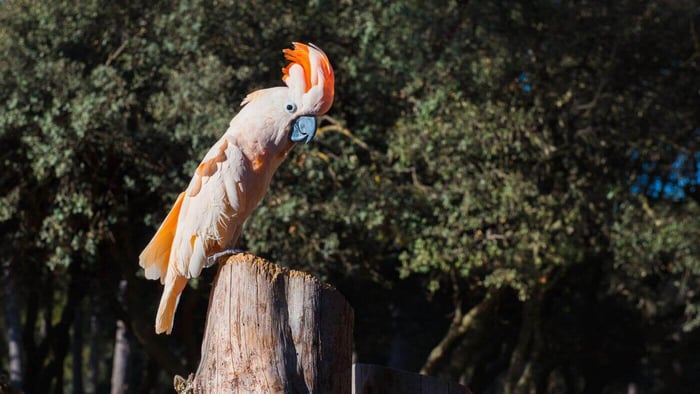
Moluccans demand a lot of attention from their owners. When under-stimulated or not provided with an adequate amount of attention, they will easily become bored, which can lead to overpreening. From consistent over-preening, it's only a small step to a full-blown plucking problem.
Lack of attention can cause severe depression in these birds, as they are extremely social. Stress and boredom thus remain the main causes of feather plucking in Moluccan cockatoos. Unfortunately, this behaviour is often addictive, meaning it can be very difficult to get a parrot to stop plucking even if its situation has improved.
This is one of the most demanding parrot types in the hobby, which means they require a lot of attention. They are absolutely not considered beginner birds. If a Moluccan's needs aren't met, serious behavioural problems can develop. This can be in the form of aggression, noise disturbance, depression, and even result in physical sickness. Unfortunately, this causes the Moluccan cockatoo to be a regular in rescue organisations.
FACTS

- The Moluccan Cockatoo is also known as the Salmon-crested Cockatoo.
- They have a distinctive salmon-pink crest on its head.
- The Moluccan is the largest Cockatoo species.
- These birds are considered extremely needy and constantly demand the affection of their human counterpart.
- Their intelligence level makes Moluccans notorious cage escape artists.
- Both males and females partake in the egg incubation process.
- Moluccans will attack young coconuts by chewing through the tough outer layers to get to the soft pulp and milk. They're actually considered pests in coconut plantations.
- They have a very long lifespan and can live up to 70 years in captivity.
To view other Parrot Profiles & Care Guides, visit our Alphabetical list of Parrot Fact Sheets by visiting: https://parrotessentials.co.uk/blog/parrot-profiles-care-guides
SOURCES
Teitler, R. (1990). Understanding Cockatoo Personality. AFA Watchbird, 17(1), 46-48.

